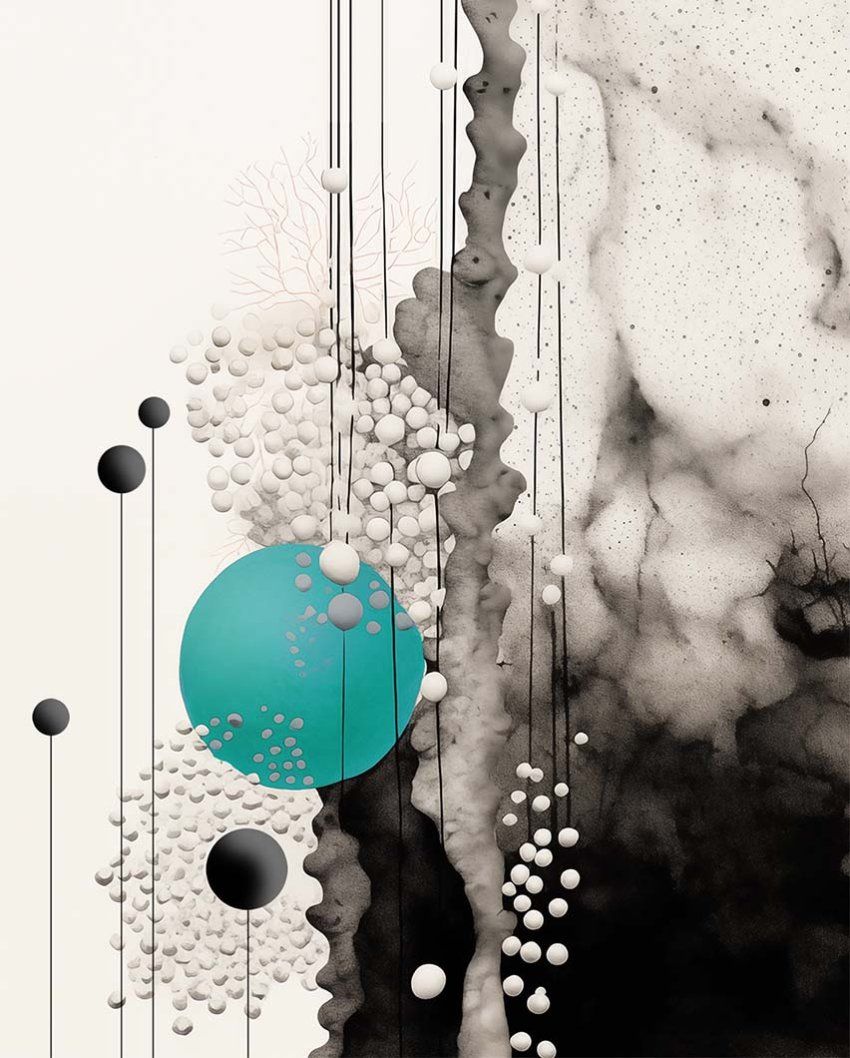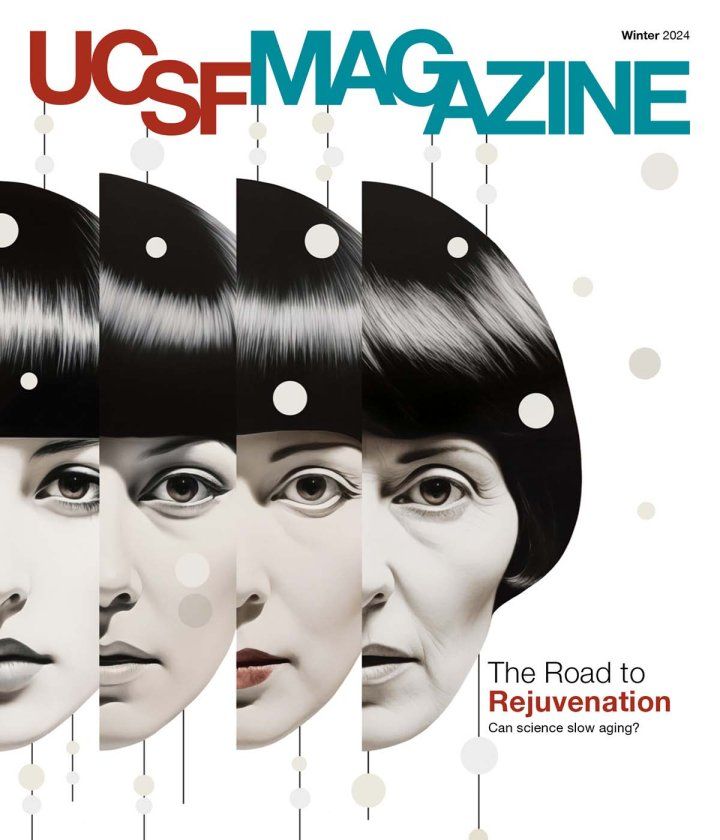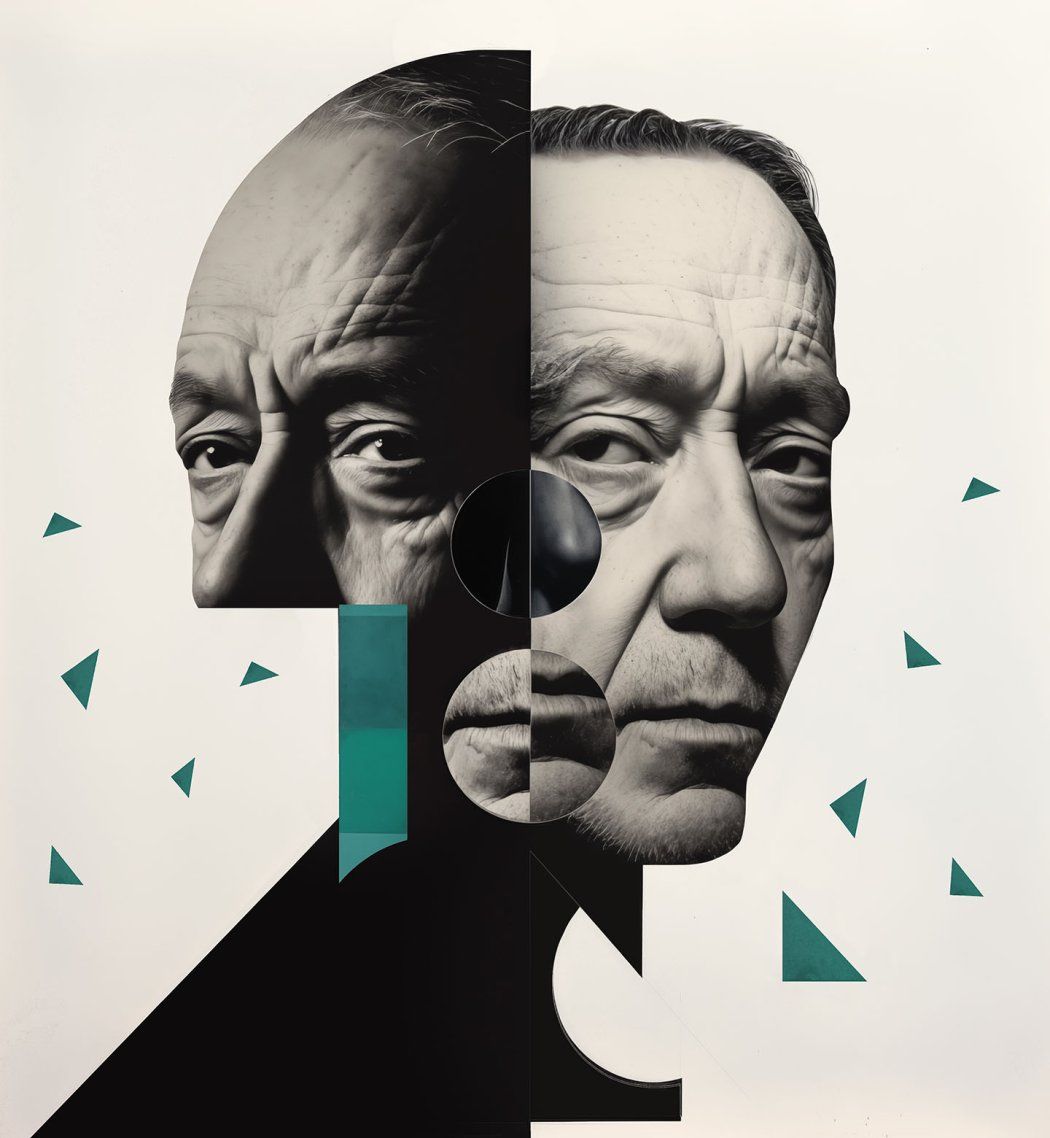
When laboratory mice are born – pink, with their eyes shut tight – they’ve already begun to age. In about eight days, their gray-black fur starts to show. By two months, the mice are grown up but young – their coats full and shiny, their bodies slender. Like humans, they reach a natural, physical peak.
This stage doesn’t last long. They lose the ability to reproduce by their first birthday. By age 2, mice are considered older adults – the rough equivalent of 70 human years. They’re filling out in the middle. Their fur is dull and flecked with white.
But they’re not too old to change. If researchers give them a running wheel or cut their calorie intake, the mice become healthier and more energetic. The researchers aren’t particularly surprised; we have long known that certain habits are beneficial to aging bodies, including our own.
Now researchers want to understand why – and they’re making fascinating discoveries that could transform human aging and tackle a host of ailments, from heart disease to dementia. At UC San Francisco’s new Bakar Aging Research Institute (BARI), 70 scientists and clinicians are all trying to answer the same question: How can we slow, or even reverse, aging?
Click a button or scroll down to explore the research.
A brain-booster in the blood
In Greek mythology, Clotho is one of the Fates. She spins the thread of life, determining when we are born and when we die. When researchers discovered a naturally occurring hormone that regulates aging, they named it klotho. The amount of klotho in your body declines with age, and people with higher levels of the hormone tend to live longer, healthier lives.
“In science, we have long thought that when we age, we age,” says Dena Dubal, MD, PhD, UCSF’s Coulter Professor of Aging and Neurodegenerative Disease. “But aging is malleable. There are actually molecules behind aging more slowly. What if we could just replenish our klotho levels periodically? Maybe klotho could be a treatment for Alzheimer’s, for Parkinson’s.”
In science, we have long thought that when we age, we age. But aging is malleable.”
Dubal has made it her mission to learn more about how klotho works and uncover its potential as an age-defying therapeutic.
A decade ago, she found that giving mice shots of klotho improved their cognition and made their brains more resistant to age-related degeneration. Since then, she’s been investigating klotho’s potential as a therapy for aging brains. Her team studied klotho in rhesus macaques, primates with brains similar to those of humans. After a shot of the hormone, the macaques could more quickly and accurately remember where to find a food treat.
How does klotho provide this brain boost? The hormone itself doesn’t cross the blood-brain barrier. In her most recent work, Dubal found that klotho can stimulate platelets, which are produced by bone marrow and help form clots. Platelets are known for their ability to stop bleeding so the body can repair injuries. When mice are injected with klotho-stimulated platelets, their bodies release platelet factors that travel to the brain. One in particular, platelet factor 4 (PF4), acts as a cognitive enhancer. It appears to strengthen the connections between brain cells.
“It’s a really unconventional role for platelets,” Dubal says. “PF4 can do what klotho does. Understanding how it does that is a high priority for us.”
Dubal’s PF4 finding became even more notable when she realized she was not the only researcher to identify its cognitive enhancement capabilities. Two other teams, one of them also at UCSF, have reached the same conclusion: PF4 seems to cause a brain boost in mice. All of the researchers are continuing their work on PF4, in the hope of one day testing the molecule as a therapeutic in humans. An early challenge: ensuring that PF4 doesn’t cause harm, given its potential to increase blood clotting. So far, Dubal says, her team hasn’t observed any negative side effects.
Just one in five people has a genetic variant that produces high levels of klotho (and, presumably, PF4) in the body. But Dubal points out that everyone has some level of klotho – and the power to change it.
“Age-related cognitive dysfunction has become one of the biggest biomedical problems for which we have no effective medical therapies,” she says. “There’s nothing that can be done about whether I have the variant. But I know exercising and stressing less can increase klotho levels, so I focus on what I can influence.”
Lower oxygen, longer life?
It’s almost impossible not to live an active lifestyle in Denver. Protected bike lanes line the streets. The surrounding mountains offer a playground of hiking trails and ski slopes. But Isha Jain, PhD, a UCSF assistant professor of biochemistry and biophysics, thinks there might be another reason why Rocky Mountain residents have a longer life expectancy than inhabitants of almost any other area of the U.S.
Denver is known as the Mile High City for its extreme altitude; sit in the 20th row of the upper deck at Coors Field, home of the Colorado Rockies baseball team, and you’re a whopping 5,280 feet above sea level. (San Francisco’s average elevation: 52 feet.) That means Denver’s air has less oxygen than lower-lying cities. Jain is studying how low-oxygen environments protect our bodies from age-related cell damage.

“If you do a heat map of altitude and longevity in the U.S., the overlap is striking,” she says. “But there isn’t a proven association between altitude and increased longevity. Epidemiological studies can be confounded by factors like diet and exercise. We’re hoping, in the lab setting, to dissect out the contribution of oxygen versus other lifestyle variables.”
In Jain’s early work, lab mice with a disease that caused them to age prematurely resided either in a cage with sea-level air or a “hypoxia hotel,” a large box in which the oxygen was diluted to about 11%. That’s the equivalent of air at an altitude of about 14,800 feet, such as the mountain regions of Nepal and Peru. The mice breathing sea-level air – with double the proportion of oxygen – died at about 50 to 60 days old, a typical lifespan for mice with their condition. Mice in the hypoxia hotel lived three times as long.
“Oxygen has always been considered to be a beneficial gas,” Jain says. “We’ve been challenging that premise by showing that moderate hypoxia – a low-oxygen environment – is actually beneficial. We call this the Goldilocks Oxygen Principle: Both too much oxygen and too little oxygen can be toxic.”
Jain hypothesizes that a low-oxygen environment prevents and reverses oxidation, a process that damages cells and increases over time. Nutritional research also explores whether certain foods and supplements might safely limit oxidation in the body – and how their absence might speed up the damage. A newer arm of Jain’s research focuses on how specific vitamin deficiencies can affect aging and age-related diseases. “We are identifying sets of age-associated conditions that are benefiting individually from each vitamin,” she says. “We’re trying to turn that into targeted therapies, almost like a personalized medicine approach to vitamins.”
In the future, Jain hopes to offer clinical trials of inhaled hypoxia as a therapy for children with severe mitochondrial disorders, who age rapidly and have few treatment options. If inhaled hypoxic therapy is found to be safe, Jain says it could be delivered through a portable hypoxic tank – like the oxygen tanks that patients with limited lung function use, but with the reverse effect – so patients aren’t confined to hypoxic rooms. For now, though, it’s not easy to put this research to use.
“Extreme hypoxia can be dangerous,” she says. “We really do need to do the clinical trials before applying this concept to ourselves.”
The inflammation-aging link
Inflammation in the body has been linked to some of the most devastating diseases of our time: Alzheimer’s, cancer, diabetes, and more. But controlling “inflamm-aging” – the chronic, low-grade inflammation that increases in our bodies with age – is complicated, according to Ari Molofsky, MD, PhD, an associate professor of laboratory medicine. The body sometimes needs inflammation to fight off infections or heal wounds.

“Inflammation is not all bad,” he says. “Most of it is our body trying to do what it thinks is right. It tries to repair damage and limit infection. In many cases, there is a complete repair back to baseline. But sometimes we don’t quite get back to where we began, and a lifetime of this process alters our immune state and can create inappropriate inflammation, which is part of what’s pushing folks toward diseases associated with aging.”
Researchers have known about the inflammation-aging connection for some time. Now, they’re exploring ways to safely reduce the inflammation in our bodies – from the heart to the brain and even the skin – to slow the aging process and extend good health as long as possible.
Molofsky’s work aims to build a deeper understanding of the immune system and how we might modify and direct it. For example, a stroke often causes damage and inflammation around the brain. Molofsky recently found that fibroblasts, cells that help form connective tissue, contribute to the rebuilding of the brain’s borders after a stroke. It’s a surprising finding given that, until recently, technology wasn’t advanced enough to provide a detailed rendering of these “builder” cells at the blood-brain barrier.
“We think immune cells are talking with the builders and remodelers of the tissue,” Molofsky says. “Understanding that crosstalk is going to be critical.”
His lab is mapping out the cellular pathways behind normal body processes to better understand what goes wrong in age-related diseases. He hopes to manipulate fibroblasts so they work in a way that regenerates damaged tissue but stops unnecessary inflammation.
“We want to make the builders build for us,” he says. “Our goal is to use them across diseases of the central nervous system and other organs to reinforce a healthy structure.”
Some inflammation solutions could emerge merely from fixing chronic conditions. In a recent collaboration with radiology colleagues, Aric Prather, PhD, a professor of psychiatry, found that people with insomnia have higher levels of vascular inflammation – a process linked to plaque buildup in the arteries and cardiovascular disease – compared to people without sleep problems. The upside? Data from other researchers suggest that when a person with insomnia is treated, their levels of systemic inflammation may decrease.
Another chronic condition worth treating? Dry skin. The body’s largest organ, the skin is also prone to age-related inflammation. Research suggests this could be more than just a cosmetic concern. Inflammation in the skin might spread throughout the body and contribute to other health problems, says Katrina Abuabara, MD, an associate professor of dermatology. In a 2022 paper, she reported that adult patients with eczema have a 27% higher risk of dementia.
Preventing or easing mild skin inflammation might be surprisingly simple. Research by Peter Elias, MD ’67, a UCSF professor emeritus of dermatology, suggests that applying petroleum jelly to the skin of older adults might reduce levels of inflammation in their blood.

Stem cells: The body’s master regenerators
If scientists can find ways to safely use and enhance stem cells, they could be the ultimate antiaging agent. Embryonic stem cells have the remarkable ability to transform into any type of cell in the body, from liver to bone. Later, adult stem cells help maintain our bodies, constantly replenishing their reserves to support regeneration and repair. For example, specialized stem cells in your bone marrow make blood cells – not just once, but throughout your life.
Unfortunately, stem cells aren’t immune to the aging process. Stem cell biologist Leanne Jones, PhD, UCSF’s Stuart Lindsay Professor of Experimental Pathology and the director of BARI, is working to understand how the functions of adult stem cells break down as we get older.
“It’s important to know how aging impacts stem cells,” Jones says, “because we want to utilize them for regenerative medicine. Some researchers are already exploring ways to use stem cells to, say, reverse age-related macular degeneration in the eyes or replace dysfunctional dopaminergic neurons in the brains of Parkinson’s patients.”
One way to protect stem cells might be ensuring that they have enough of the right kinds of energy sources to function properly, while also getting rid of byproducts the cells generate. Jones’s team found that when certain adult stem cells contained too many lipids, they lost the ability to renew themselves and generate specialized cells over time. Further study is needed, but Jones is investigating whether enzyme-targeting therapeutics might ensure the right balance of lipids in cells and improve tissue maintenance in older adults.
We want to get people living more healthily for as long as possible.”
Physical exercise appears to be a practical way to slow the decline of stem cells. In other research, Jones found that older mice that exercised voluntarily for six weeks had an uptick in cell division in their small intestines. The result was so striking that the cellular composition of the intestine of an older mouse that exercised looked similar to that of a younger mouse. Jones is still working to understand why exercise stimulates cell division in the digestive system, which typically doesn’t function optimally as we age. She hypothesizes that exercise could be causing changes that enable us to better absorb the nutrients needed to fuel physical activity and recovery.
Having a cellular-level understanding of how exercise spurs rejuvenation in the body could help scientists mimic the response with a therapeutic, Jones says. In the intestine, for instance, such a medication could counter digestion problems in older adults who are too ill or weak to exercise.
“We want to get people living more healthily for as long as possible,” Jones says, “That’s our goal.”
Cut calories, sharpen memory
Need inspiration to pursue a healthy lifestyle? For Saul Villeda, PhD, associate director of BARI and UCSF’s Endowed Professor of Biomedical Sciences, it’s laboratory mice. Years spent watching the older mice in his lab exercise regularly or restrict calories – then appear to grow younger before his eyes – have changed Villeda’s own behaviors for the better.
“When I saw this old, fat mouse with gray hair start to look shinier and fitter, even I started exercising,” he says. “I never did that before. And I’m more mindful about what I’m eating, of not being like that mouse at the all-you-can-eat buffet.”
Villeda’s latest research involves short-term, late-in-life caloric restriction in mice. His team gave mice unlimited access to a high-fat, high-protein food mix for two weeks, while researchers weighed their intake. Then they gave the mice about 30% less food. After the calorie restriction, the mice were tasked with a series of cognitive-behavioral tests, like navigating water mazes to reach a dry platform.
“It’s similar to us finding a car in a parking garage,” Villeda says. “When the mice are young, they’re really good at the mazes. When they’re old, they’re pretty bad. It takes more time and they make more errors.” By tallying those errors and timing the mice, Villeda found that calorie-restricted older mice had memory recall as good as their younger counterparts.
Villeda hypothesizes that this kind of memory improvement is a stress response – the body’s way of maintaining health in the face of limited resources, whether taking in fewer calories or burning more of them. Finding out exactly how this response occurs will be no easy task, Villeda says, but it would pave the way to developing drugs that mimic it.
“We’re fascinated with identifying how we can trick the body into thinking that it’s calorically restricted without actually doing it,” he says. “We know this extends health and life span. But caloric restriction is not sustainable as people age. We want the benefits without the struggle. I still want to eat brownies and bacon.”





